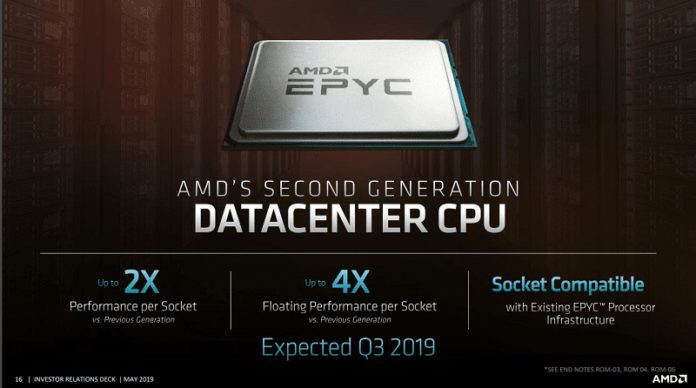At the investors’ presentation earlier this month, AMD shared the future roadmap of the company’s plans in both the CPU and GPU space. Turns out RTG will finally be ditching the GCN GPU architecture and moving onto the next-gen Arcturus design based on TSMC’s 7nm+ chips in 2020. As for Zen, the third generation is taped and on track for production while Zen 4 is currently being worked on.

We’ve already seen the Radeon VII based on the Vega 7nm chip and Navi is slated for launch in the third quarter of 2019. The successor to Navi hasn’t officially been named and is just given the “next-gen” name-tag, but according to the rumor mill, it’ll be codenamed Arcturus. It is expected to land in 2020 by the third quarter and we should see shipments soon afterward.
There weren’t many details about the CPU roadmap, just the bare minimum. Zen 3 has been developed and is on track for production based on TSMC’s 7nm+ design, possibly launching in 2021. The next part of the puzzle, Zen 4 ought to leverage TSMC’s 6/5nm EUV process that the company has been lately talking about. Other than that, the rest is pretty much a mystery.


There were a few details that were shared regarding the Zen 2 based Epyc CPUs for Data Centers. As per AMD’s slides, the 64 Core/128 Thread “Rome” processor will work with the present Zen+ sockets and offer twice as much performance per socket, compared to the Zen+ Epyc chips. The floating point performance is expected to increase by 4 times per socket compared to the present gen. Like the Navi GPUs, the 7nm Epyc processors are planned for a Q3 2019 launch after the desktop class Ryzen 3000 processors.
Related:
AMD Radeon Navi RX 3080 with NVIDIA RTX 2070 Level Performance to Cost $330?
AMD is also making forays into the Data Center GPU market with the MI25, MI50, and 60 HPC accelerators. The top-end Radeon Instinct MI60 packs a 7nm Vega GPU (yes, similar to the Radeon VII) that offers 59 TOPS of INT8 performance for AI-based Inference Workloads. There’s also mention of the Cloud Gaming segment based on Navi with an expected launch alongside the new GPUs in Q3. This is most likely referring to the Google Stadia streaming service that will also use Zen 2 cores and a Navi GPU.

Read more:



This is curious considering that people are hoping Navi20 will be big Navi. There is no big Polaris and Polaris20 is a relatively minor tweak of Polaris10 and Vega is the big GPU. If Next Gen (Arcturus?) is the next big GPU landing in 2020 it doesn’t leave room for a big Navi also in 2020. It follows AMD’s leap frogging development teams that Polaris’s team also developed Navi and Vega’s team is doing Arcturus. If they stick with the separate big, small, GPU’s effectively being developed in parallel, might they also stick with the next generation of the same memory type for each teams GPU. It looks like Navi will be GDDR6 (Polaris was GDDR5). Could Arcturus be HBM3? HBM didn’t work out so great for Vega’s costs which is what confined Vega to the high end cards. Navi is supposed to be the last GPU to use GCN microarchitecture with its inherent scaling limitations. Scalability was an AMD design goal for Navi when it wasn’t going to be GCN so that ambition falls to Arcturus now with its new microarchitecture unless AMD stick with GCN for another round. If Arcturus could be made power efficient enough without HBM it could cover the whole product stack ditching the big, small GPU cycle. This would effectively halve AMD’s development cycle cadence and speed up AMD’s GPU evolution. Lots of possibilities and no certainties there for AMD.
Sony slide for PS5 lists CPU as having 3640 stream processors. Multipliers to get to 3640 are 5, 7, 8, 13. I think this means Navi might have 5 graphics pipes as oposed to GCN’s normal 4 pipes?